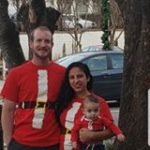Where does the name Cusco come from?
The actual name “Cusco”, derived from the Quechua word “Qosqo”, literally means «navel of the world» due to the Incan belief that Cusco was actually the center of the world; not a surprising belief if you consider that Cusco once served as a hub for the vast Inca network of roads.
Where are the best places to eat and drink in Cusco?
Peru is known for its excellent cuisine and in Cusco you can find a wide range of restaurants offering some of Peru´s finest dishes at very reasonable prices (La Cicciolina, Inka Grill, and Chez Maggy, among others). Cusco also boasts a vibrant nightlife that you can enjoy well into the early hours of the day (Mama Africa, Paddy O’Flaherty’s, and Km. 0, among others.
Are there tourist information offices, and where are they located?
There are two main tourist information offices located in Cusco. InfoPeru, the national tourist information office, located near the Main Square; and DIRTUR, the regional office, located between the Main and San Francisco Square.
What extra activities are available in Cusco?
These are some of the extra activities we can arrange for you: Horseback Riding, Mountain Biking, Hiking, Tandem Paragliding, River Rafting, Lake kayaking, Pottery or Textiles Workshop, Cooking Classes, among many others.
Are there limits on luggage for the train to Machu Picchu?
All passengers travelling on the train to Machu Picchu only have a limit of 5kgs (11 lbs). The morning of your trip to Machu Picchu, you will need to leave your luggage in the hotel storage and collected when you return from Machu Picchu.
What if I what to climb Huayna Picchu (the mountain you can see behind Machu Picchu)?
A maximum number of four hundred people (in two shifts 07.00 am and 10.00 am) per day can climb Huayna Picchu. In case you want to do it you must inform us well in advance, as it needs reservation and has an additional fee.
When is the best time to hike the Inca Trail to Machu Picchu?
The dry season, which runs from April to October is the best time (and most popular) to hike because of the milder daytime weather. You will need to make your reservations 3-6 months in advance. The Inca Trail is closed during the month of February each year.
How can I find out if the dates I want for the Inca Trail are available?
You may check the official Machu Picchu website: http://www.machupicchu.gob.pe/ and then select the ‘Consultas’ tab. Finally, select your dates.
How many people are allowed on the Inca Trail?
There are a total of 500 passes for the Inca Trail each day. This includes trekkers and all staff (cooks, porters, guides, etc). The 500 passes are for all versions of Inca Trail (The Classic, The Short Version and The Extended).
If the Inca Trail is sold out for the dates I want, are there other trekking options?
Yes, not to worry, we can offer you several other options. We offer treks on the Salkantay Trail, the Lares Trek, and the Choquequierao Trek. Your travel advisor will be happy to help you select the right trek for you.
What do we do for drinking water?
The campsites will provide boiled water for everyone to fill their bottles during meals. You can also refill your water bottle in the mountain springs that you will pass during the hike, but you will need to use your water purification tablets (wait 40 minutes before drinking).
What are the toilets like along the trail? Will I be able to shower at all along the trail?
Toilets have improved a lot in the last couple of years and all of the larger campsites have toilet blocks with flush toilets and running water. Unfortunately there are no showers along the trail; however, at the last campsite, showers are available at a cost.
How fit do I need to be to do the Inca Trail?
You need to be fit and in general good health. However, generally speaking, if you are an active person in your daily life, you will have no problems doing the Inca Trail, especially if you are accustomed to lots of walking and trekking. Most treks in Cusco areas are rated as moderate in difficult levels.
What about theft?
Theft is now quite uncommon on the trail provided that you take basic precautions, such as not taking any unnecessary valuables with you that you don’t need for the trek. Leave jewelry, large sums of money in your hotel safe. However you need to take your passport on the trek.
Does Peru Travel Solutions provide all the equipment needed for the trek?
We provide single and double tents as well as camping pads, dining ware, tables and chairs. Sleeping bags and air mattresses may be rented (or you may bring your own) and you may want to bring your own walking stick or purchase one upon arrival.
What kind of food will be served along the trail?
We serve breads, pancakes, jam, coffee and tea for breakfast. Lunch and dinner will consist of soups followed by a main plate of fresh trout, chicken or beef. There is no problem accommodating vegetarians (please inform us in advance).
Do I need to hire a porter for the trail?
Hiring a porter is optional and depends on your physical condition. Even though you may be used to carrying a heavy pack, the altitude makes quite a difference in your experience, and we all want you to enjoy the trek to its fullest.
How much should I tip my guides, porters and cooks?
Tipping guidelines are according to the number of people in your group. The more people, the less you should have to pay as the cost is divided amongst the group. A general guideline to consider per day / person is: Tour Guides US$6.00; Porters US$5.00; and Cook US$4.00.
What if I get altitude sickness while doing the Inca Trail?
Our guides will be evaluating each trekker through the first day and observing any signs of altitude sickness. In the unlikely event that you have a severe case of altitude sickness a porter will carry you back to the closest populated area.
What happens if I’m sick or I have an accident?
All of our guides are fully equipped with both oxygen and a first aid kit and can easily attend to minor injuries and illnesses. In the unlikely event that you should suffer a more severe injury, a porter will carry you to the closest populated area for attention.
What do I need to pack for the trail?
All camping equipment for the trekking excursions is provided for you and is carry by the group porters. You will only be responsible for carrying your backpack (there are weight limits). If you are doing the Inca trail or any other trekking excursion; you must bring the following: Packing List
What do I need to carry?
You will need to carry all of the items you bring to the trek, unless you hire a personal porter. If you hire a personal porter, he will carry your backpack up to 7 kg. (15 lbs.). You should be able to fit everything else into a daypack that you will carry.
Can I trek the Inca Trail alone without a travel operator?
No. Trekkers have to trek using the services of a licensed tour operator or directly employ the services of a professional guide. This has been implemented for the hikers own safety.
If I bring my own sleeping bag, what kind should I bring?
We recommend a 3-season bag, which has a temperature rating of 10-35° Fahrenheit. If you don’t want to bring your own sleeping bag, you can rent a 3-season sleeping bag in Cusco.









